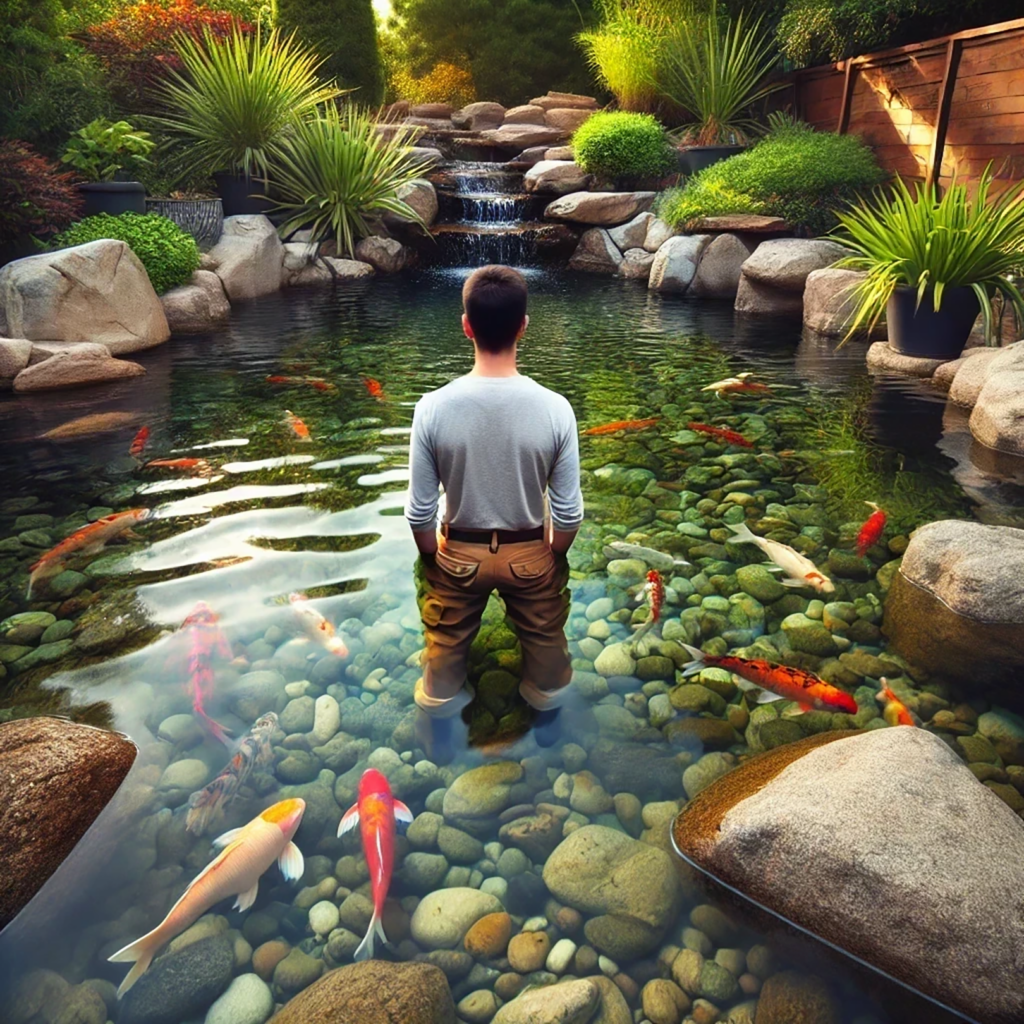
Safe to Swim in New Jersey Koi Pond: Essential Tips
Ensuring it’s safe to swim in your New Jersey koi pond involves understanding how it impacts your koi and the ecosystem. Here are five essential tips to help you enjoy a cool dip without harming your aquatic friends.
Understanding the Impact on Koi and the Ecosystem
Cooling off in your pond can affect the koi and the overall ecosystem in various ways. It is crucial to understand these impacts to minimize any negative effects.
1. Monitor Water Quality
One of the primary concerns when swimming in a koi pond is water quality. Human activity can introduce contaminants such as sunscreen, lotions, and sweat into the water. These substances can alter the water chemistry, potentially harming the koi and other aquatic life.
- Contaminant Introduction: To mitigate this, rinse off thoroughly before entering the pond to remove any lotions or oils. This simple step can help maintain the water quality.
2. Minimize Physical Disturbance
Swimming in a pond can stir up sediment from the bottom, leading to temporary cloudiness. This disturbance can stress koi and disrupt the natural filtration processes.
- Gentle Entry: Enter the water slowly and avoid vigorous movements that could disturb the sediment. Encourage gentle wading rather than active swimming to minimize disruption.
3. Manage Temperature Fluctuations
Human body temperature can slightly raise the water temperature, especially in smaller ponds. While this effect is minimal, it can still stress koi, which thrive in stable water temperatures.
- Time and Duration: Limit the time you spend in the pond and avoid doing so during the hottest part of the day to minimize temperature changes.
4. Enhance Oxygen Levels
Increased activity in the pond can reduce oxygen levels, which are crucial for koi health. Koi are sensitive to changes in oxygen levels, especially during warm weather when the water’s oxygen-holding capacity is already lower.
- Aeration Systems: Ensure your pond has a good aeration system in place, such as a fountain or air pump, to maintain adequate oxygen levels even when the pond is in use.
5. Follow Safety Considerations for Humans
While it is generally safe to swim or wade in your pond, there are some safety considerations to keep in mind for yourself as well:
- Depth and Safety: Ensure the pond is deep enough for safe entry and that there are no sharp objects or slippery surfaces that could cause injury.
- Waterborne Pathogens: Natural water bodies can harbor bacteria and parasites. While a well-maintained pond is less likely to have harmful levels, it is still wise to avoid swallowing pond water and to shower after swimming.
Creating a Balanced Approach
Balancing the enjoyment of cooling off in your pond with the health of your koi and ecosystem is achievable with a few mindful practices.
- Dedicated Areas: If possible, designate a specific area of the pond for human use, away from the primary habitat of the koi. This can help reduce the impact on the fish and the ecosystem.
- Regular Maintenance: Regularly test and treat your pond water to ensure it remains clean and healthy for both human and fish use. Maintaining a proper balance of beneficial bacteria and plants can help keep the water quality high.
Conclusion
Ensuring it’s Safe to Swim in New Jersey Koi Pond involves careful consideration and proactive steps. By understanding and mitigating the impacts on your koi and the ecosystem, you can enjoy a safe and enjoyable time for both you and your aquatic friends. Always prioritize the health of your pond and its inhabitants by taking preventive measures and maintaining good pond management practices.
For personalized advice or professional assistance in maintaining a healthy pond, Contact us at 973-627-0515 to reach Atlantis Water Gardens. We’re here to help you enjoy your pond safely while keeping your koi and ecosystem thriving.